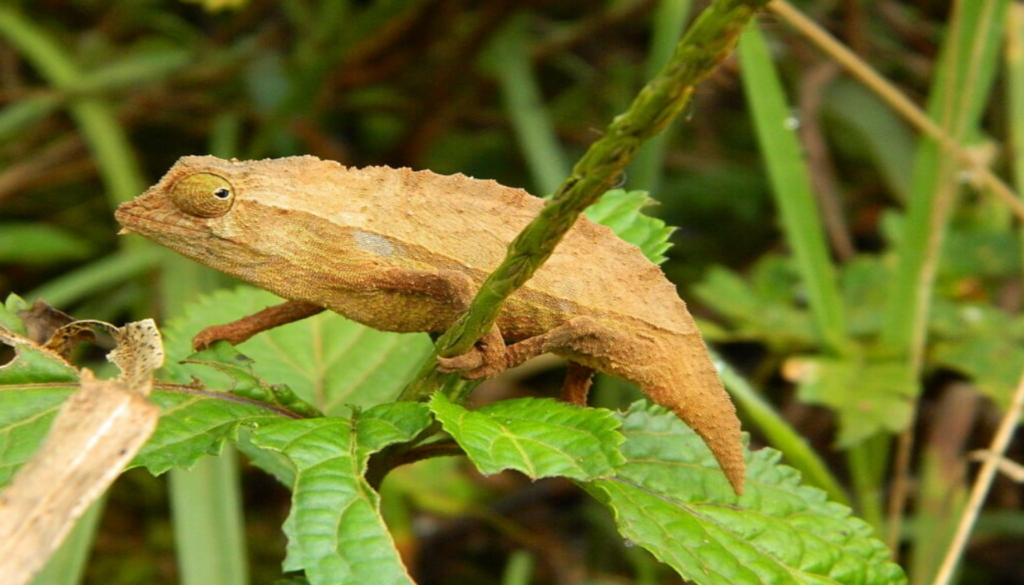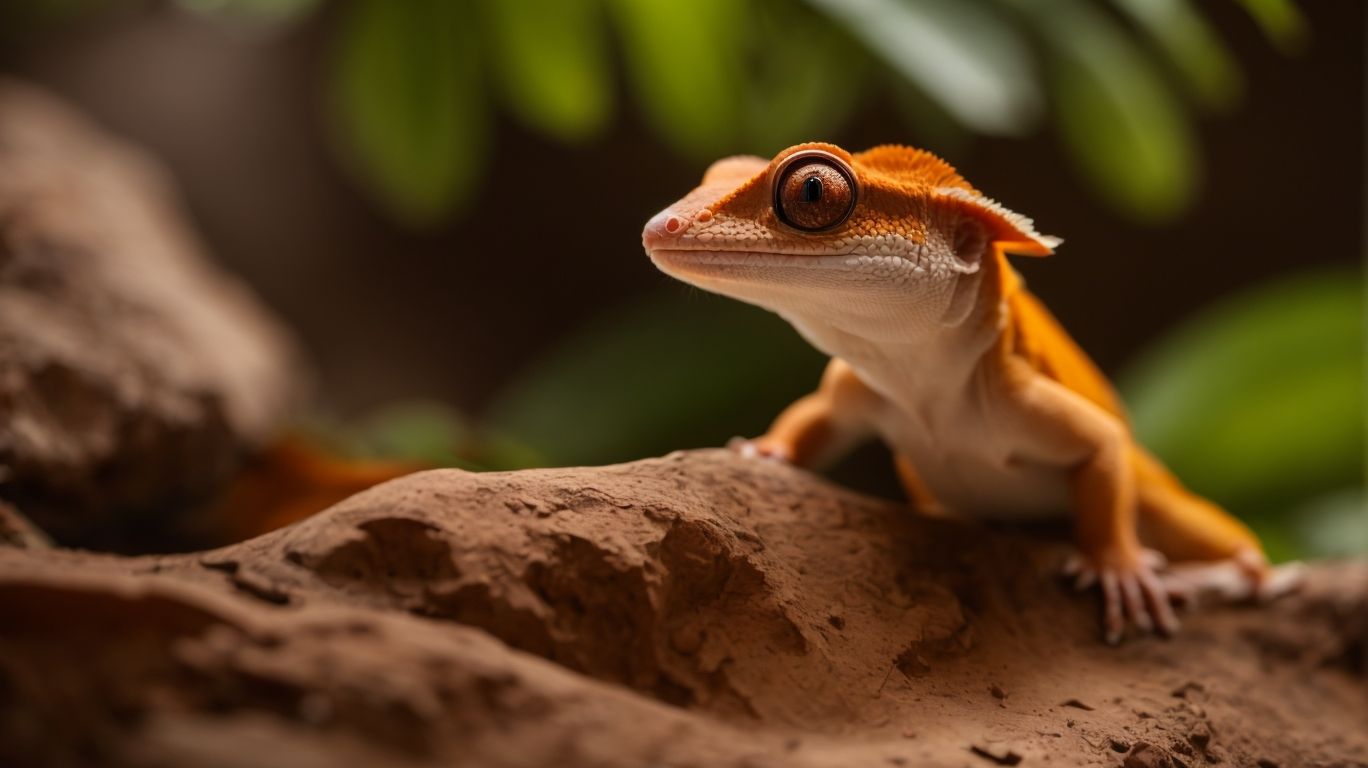
Meet the Cutest Pet: The Pygmy Chameleon
Table of Contents
Origin and History Pygmy Chameleons
The origin and history of pygmy chameleons is a fascinating journey into the depths of time and evolution. These enchanting creatures belong to the Rhampholeon spp. family, which includes several species of tiny chameleons with unique characteristics.
Pygmy chameleons are native to the lush rainforests of East Africa, specifically in countries such as Tanzania and Kenya. They have adapted to their environment over millions of years, developing the remarkable abilities that make them so captivating. Their small size and intricate camouflage abilities allowed them to thrive in an environment where predators lurked around every corner.
The history of pygmy chameleons is closely intertwined with the rich biodiversity of the African rainforests. As these forests flourished, so did the pygmy chameleons, adapting to their surroundings and becoming masters of disguise and agility.
The Striking Appearance of Pygmy Chameleons
The striking appearance of pygmy chameleons is what truly sets them apart from other reptiles. These tiny creatures have unique features that make them both mesmerizing and adorable. With their petite size and vibrant colors, they are like living gems that add a touch of magic to any home.
Pygmy chameleons come in a variety of stunning colors, ranging from vibrant greens and yellows to bold reds and blues. Their skin is covered in small, bumpy scales, giving them a textured and almost metallic appearance. These scales also contribute to their remarkable camouflage abilities, allowing them to blend seamlessly with their surroundings.
One of the most eye-catching features of pygmy chameleons is their large, expressive eyes. These captivating orbs come in various shades, including striking shades of red, orange, and yellow. Their eyes are not only aesthetically pleasing but also serve a practical purpose. With their 360-degree vision, pygmy chameleons can spot potential threats or prey from all angles.
Additionally, pygmy chameleons have a distinct body shape. Their slender bodies and elongated limbs give them an elegant and graceful appearance. Some species has prehensile tails, which can curl and grip onto branches, add to their overall charm and agility.
Pygmy Chameleon’s Interesting Behavior
The pygmy chameleon’s interesting behavior is just as captivating as its stunning appearance. These pint-sized reptiles have a unique set of behaviors that make them even more endearing to pet owners.
One of the most fascinating behaviors of pygmy chameleons is their ability to change colors. This incredible skill not only allows them to camouflage themselves in their environment but also serves as a form of communication. Pygmy chameleons can change their colors to convey different moods or to attract a mate. It’s like having a living mood ring right in your own home!
Another interesting behavior of pygmy chameleons is their hunting technique. These tiny creatures have a lightning-fast tongue that can shoot out and grab prey in a matter of milliseconds. It’s a sight to behold as they stalk their prey and strike with precision.
Pygmy chameleons are also known for their unique movement. They have the ability to walk on two legs, giving them a somewhat human-like appearance. This adds to their charm and makes them even more adorable.
In addition, pygmy chameleons also have interesting social behavior. They are typically solitary creatures, but during mating season, males will display vibrant colors and perform elaborate courtship rituals to attract females. It’s like a mesmerizing dance in the animal kingdom!
Pygmy Chameleon’s Diet and Nutrition
Pygmy chameleons have unique dietary needs that are essential for their overall health and well-being. These tiny reptiles primarily feed on a diet of small insects, such as crickets, fruit flies, and small spiders. It is important to provide them with a varied diet to ensure they receive all the necessary nutrients.
In addition to insects, pygmy chameleons can also benefit from occasional supplementation with calcium and vitamin D3. These supplements help support their bone health and prevent common issues such as metabolic bone disease. It is best to consult with a reptile veterinarian or an experienced breeder to determine the appropriate dosage and frequency for your pygmy chameleon.
It is crucial to offer your pygmy chameleon fresh, clean water daily. However, they rarely drink from a water bowl and obtain most of their hydration from droplets of water on leaves. To mimic their natural habitat, mist the enclosure with water a few times a day to create these droplets.
It is important to remember that pygmy chameleons have small appetites and do not require large amounts of food. Overfeeding can lead to obesity and other health issues. It is best to feed them small portions of insects a few times a week.
Caring for Your Pygmy Chameleon
Caring for your pygmy chameleon is essential to ensure its health and happiness. These tiny creatures have specific needs that must be met in order for them to thrive in captivity. Here are some important tips for providing the best care for your pygmy chameleon:
- Habitat: Create a suitable habitat for your pygmy chameleon by setting up a terrarium that mimics its natural environment. This includes providing plenty of branches and foliage for climbing and hiding, as well as a substrate that retains moisture.
- Temperature and Humidity: Pygmy chameleons require a warm and humid environment. Maintain a temperature range of 75-85°F (24-29°C) during the day and slightly cooler temperatures at night. Humidity should be kept between 60-80% to prevent dehydration.
- Lighting: Proper lighting is crucial for pygmy chameleons. They need access to UVB lighting to aid in calcium absorption and prevent metabolic bone disease. Provide a UVB light source for 10-12 hours a day, along with a basking spot where the temperature reaches 85-90°F (29-32°C).
- Handling: While pygmy chameleons can be handled, they are delicate creatures and should be handled with care. Limit handling to avoid stressing them out, and always support their body and tail.
Addressing Health Issues in Pygmy Chameleons
While pygmy chameleons are generally hardy and low-maintenance pets, they can still experience some health concerns. As a responsible pet owner, it’s essential to be aware of these issues and know how to resolve them. Here are a few common health concerns you may encounter with pygmy chameleons and how to address them:
- Respiratory Infections: Pygmy chameleons are susceptible to respiratory infections, especially if they are kept in environments with poor ventilation or inadequate humidity levels. If you notice symptoms such as wheezing, difficulty breathing, or discharge from the nose or mouth, it’s crucial to consult a reptile veterinarian. They may prescribe antibiotics or recommend adjustments to the chameleon’s habitat to resolve the infection.
- Metabolic Bone Disease: Insufficient calcium or vitamin D3 in the diet can lead to metabolic bone disease, causing weak bones and deformities. To prevent this, ensure your chameleon’s diet includes calcium-rich insects and proper supplementation. Additionally, provide UVB lighting to aid in calcium absorption. If you suspect your chameleon has metabolic bone disease, seek veterinary care for a diagnosis and treatment plan.
- Parasites: Internal and external parasites can affect pygmy chameleons, leading to poor health and decreased appetite. Regular fecal examinations by a reptile veterinarian can detect and treat these parasites. Additionally, maintaining clean living conditions and proper hygiene practices can help prevent parasite infestations.
- Dehydration: Pygmy chameleons rely on water droplets on leaves for hydration. Insufficient access to water or low humidity levels can lead to dehydration. Ensure your chameleon’s habitat is properly misted to provide water droplets, and monitor their water intake. If you suspect dehydration, consult a reptile specialist for guidance on hydration techniques.
On average, pygmy chameleon can live for about 5 to 8 years in captivity, but with proper care, some individuals have been known to live up to 10 years or more. This means that bringing a pygmy chameleon into your family is a long-term commitment.
It is crucial to schedule regular veterinary check-ups to promptly identify and address any potential health issues. Regular monitoring of their behavior and physical condition can help identify any signs of illness or discomfort.
Pygmy Chameleon: The Perfect Exotic Pet
Are you looking for the perfect exotic pet to add some charm and wonder to your home? Look no further than the pygmy chameleon! These adorable creatures are the epitome of cuteness and make the perfect addition to any pet owner’s family. With their petite size, striking colors, and fascinating behaviors, pygmy chameleons are sure to capture your heart.
Imagine having a living rainbow right in your own home. Pygmy chameleons can change their skin color to blend in with their surroundings, making them like miniature, living works of art. Their vibrant colors and unique appearance will brighten up any room and bring joy to all who see them.
Not only are pygmy chameleons visually stunning, but they also have interesting behaviors that make them even more captivating. From their lightning-fast tongue that can snatch prey in the blink of an eye to their ability to change colors to convey different moods, pygmy chameleons are truly fascinating creatures.
And let’s not forget about their small size, which makes them perfect for any living space. Whether you live in an apartment or a spacious house, pygmy chameleons can easily adapt to their environment and bring a touch of exotic beauty to your home.
Related Posts

Incubating Crested Gecko Eggs: Essential Techniques and Tips
Crested geckos are fascinating reptiles that are known for their…

Red Crested Gecko Health: Common Issues and Preventive Care
Are you a proud owner of a red crested gecko?…

Creating the Ideal Environment for Your Red Crested Gecko
Do you own a red crested gecko or are you…

No Comments